- Inicio •
- Obradoiro •
- Seals & Branding •
Seals & Branding
Throughout its history, the Obradoiro From Gaitas Seivane has used several seals and brands to identify its gaitas. These have evolved over time, taking advantage of technological innovations and adapting to aesthetic tastes:

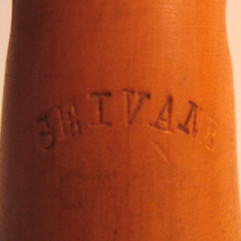
From 1963 to 1966
Up until this point, Seivane gaitas were not branded. This seal was made using a typewriter. All the gaitas with this seal came from the obradoiro in Ribeira de Piquín. Since 1963, absolutely every Seivane gaita has carried branding.
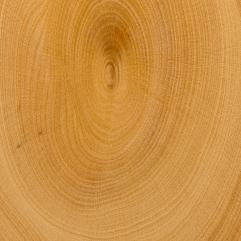
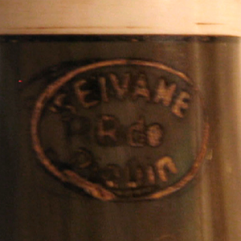
From 1966 to 1970
The obradoiro takes a step forward with this seal, by using a compact stamp for gaitas, in which Ribeira de Piquín, the municipality, can be read, as well as the Seivane name.

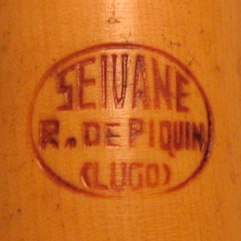
From 1970 to 1975
The province, Lugo, is added to this seal so that the geographic origin of the gaitas can be more easily identified.

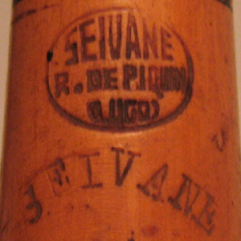
Double branding
This chanter has two seals because some bagpipers returned to the workshop to have their old gaitas re-branded.


From 1970 to 1975
The province, Lugo, is added to this seal so that the geographic origin of the gaitas can be more easily identified.


Double branding
This chanter has two seals because some bagpipers returned to the workshop to have their old gaitas re-branded.

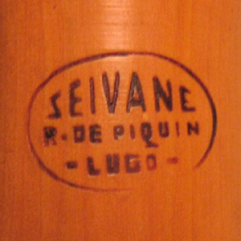
From 1975 to 1977
This slightly larger seal is used to avoid the problem of overlapping letters, especially when used on granadilla wood.

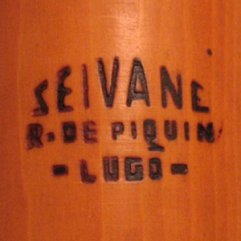
From 1977 to 1980
This seal, minus the exterior arc, is used in an attempt to try a different look.

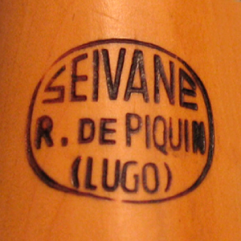
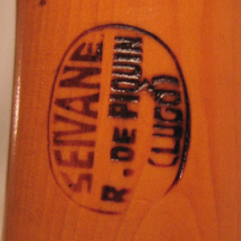
From 1980 to 1986
To improve the branding quality, a curved stamp was ordered which helped to improve branding on rounder areas of the gaita.
As the gaitas have different curves, another plain stamp was used at the same time.

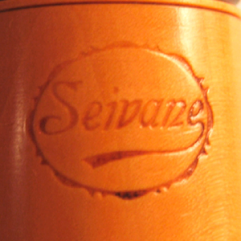
From 1986 to 1990
This seal coincides with the time when Álvaro returned to Cambre from Barcelona and the decision was made to use just the Seivane brand name, to avoid distinguishing the gaitas made in Ribeira de Piquín from those made in Cambre.



From 1980 to 1986
To improve the branding quality, a curved stamp was ordered which helped to improve branding on rounder areas of the gaita.
As the gaitas have different curves, another plain stamp was used at the same time.


From 1986 to 1990
This seal coincides with the time when Álvaro returned to Cambre from Barcelona and the decision was made to use just the Seivane brand name, to avoid distinguishing the gaitas made in Ribeira de Piquín from those made in Cambre.

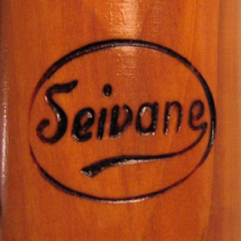
From 1990 to 1992
Due to problems experienced when engraving, especially on granadilla, the decision is made to remove the exterior rivet from the arc.

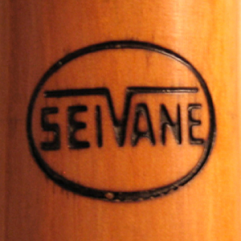
From 1992 to 1993
This seal was designed to try and avoid the perpetual problem of the overlapping between letters.

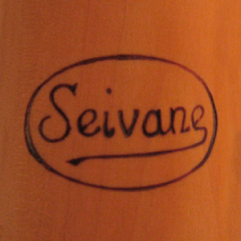
From 1993 to 1995
As the previous seal appeared to lack feeling and seemed mechanic and industrial, it was decided to return to previous designs.

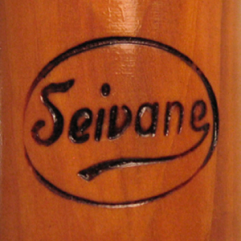
From 1995 to 2002
To coincide with the merger of both Obradoiros, it was deemed fitting to continue with the craftsman style design which had always identified Seivane gaitas.


From 1993 to 1995
As the previous seal appeared to lack feeling and seemed mechanic and industrial, it was decided to return to previous designs.


From 1995 to 2002
To coincide with the merger of both Obradoiros, it was deemed fitting to continue with the craftsman style design which had always identified Seivane gaitas.

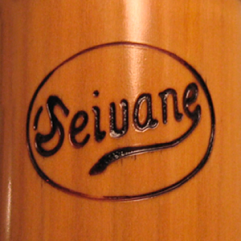
From 2002 to 2005
This brand is close to the current Seivane logo, with the «S» imitating the bag and chanter of a gaita.

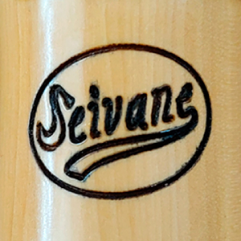
From 2005 to 2012
The most significant change in this seal is in the rubric, which now appears with a double line.

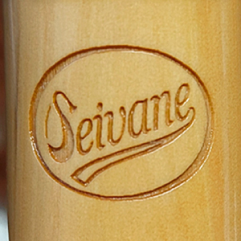
From 2012
This brand carries the current Seivane logo, with the «S» carved into the wood.


From 2012
This brand carries the current Seivane logo, with the «S» carved into the wood.
